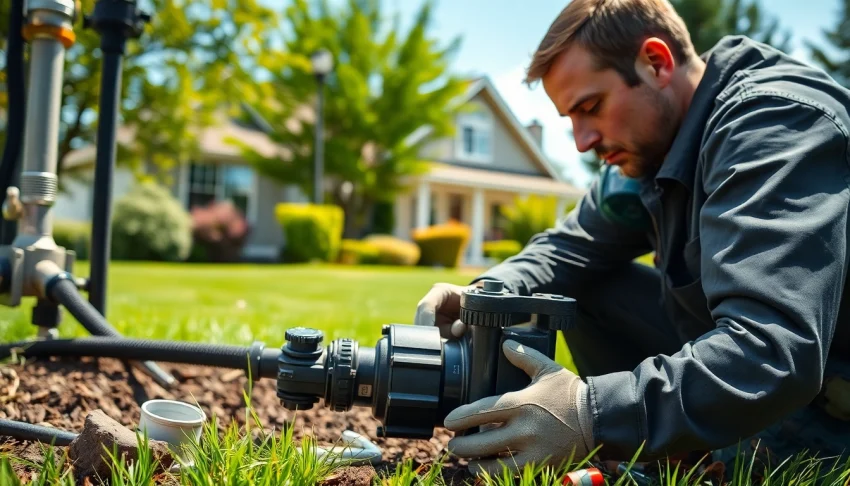Understanding Well Pumps and Their Importance
Well pumps are an essential part of any water supply system relying on groundwater sources. These devices are responsible for transferring water from the well into your home, making them a vital component for ensuring a consistent and reliable water supply. This guide will take you through the intricacies of well pumps, from their functionality to signs indicating the need for well pump replacement lacey wa, and everything in between.
What is a Well Pump?
A well pump is a mechanical device designed to extract water from a well. They can be submerged within the well or installed above ground, depending on the well’s depth and the pump’s type. Without a functional pump, households relying on private wells would have no direct access to safe drinking water or the means for essential domestic tasks.
Types of Well Pumps Used in Lacey
There are primarily two types of well pumps: submersible pumps and jet pumps. Submersible pumps are located below the water level in the well and are typically more efficient as they push water to the surface. Jet pumps, on the other hand, are installed above ground and create a vacuum to pull water upward. Your choice of pump will depend on various factors including the depth of your well and the water requirements of your household.
Why Proper Maintenance is Crucial
Maintaining your well pump is essential to prolong its life and ensure optimal performance. Regular maintenance can prevent unexpected problems such as decreased water pressure or complete pump failure. Neglecting maintenance not only risks your water supply but can also lead to more costly repairs down the line.
Signs You Need a Well Pump Replacement Lacey WA
Common Symptoms of a Failing Well Pump
It’s essential to be vigilant about any changes in your water system that may signal the need for a well pump replacement. Key indicators of a failing pump include:
- Inconsistent water flow or pressure
- Unusual noises coming from the well
- Discolored or dirty water
- Increased energy bills related to the pump’s operation
How to Identify Issues Early
Many homeowners may overlook minor symptoms, allowing problems to escalate. Regularly checking for changes in water quality or pressure will enable early detection of potential issues. Installing pressure gauges or smart water monitoring devices can also provide insights into your pump’s functions and alert you to any irregularities.
Understanding Performance Metrics
Familiarizing yourself with the performance metrics of your well pump can guide you in understanding when to schedule replacements. Key metrics include flow rate, pressure range, and pump cycle duration. Comparing these metrics to the manufacturer’s specifications can indicate whether the pump is operating as it should.
The Replacement Process for Well Pumps
Steps for Safely Replacing Your Well Pump
If an assessment indicates that your well pump needs replacement, it’s critical to follow the proper steps to ensure a safe and efficient process:
- Shut off the power supply to the well pump.
- Drain any remaining water in the system to avoid spills.
- Carefully remove the old pump, taking care to note the installation method for proper reinstallation of the new unit.
- Install the new pump, ensuring all connections are secure.
- Restore power and test the new system for proper operation.
Essential Tools and Equipment Needed
To replace a well pump, you will need an assortment of tools and equipment, including:
- Wrenches for unscrewing fittings and connections.
- Pipe cutters to modify existing piping if necessary.
- Voltage tester to ensure the power is disconnected.
- Safety gear like gloves and goggles to protect yourself during installation.
Best Practices for Efficient Replacement
For an effective replacement, consider these best practices:
- Work during daylight hours for good visibility.
- Consult the installation manual specific to your pump model.
- Have a friend or family member assist you, especially for heavy lifting.
- Follow local building codes and regulations when installing your new pump.
Cost Factors for Well Pump Replacement Lacey WA
Average Costs to Expect
The cost of replacing a well pump can vary widely based on several factors. On average, homeowners may expect to spend between $800 and $2,500 inclusive of parts and labor, depending on the pump’s complexity and the installation requirements.
Factors Influencing Overall Price
Several factors can influence the overall cost of well pump replacement:
- Type of pump: Submersible pumps tend to be more expensive than jet pumps.
- Installation difficulty: If access to the pump is limited or requires additional labor, costs can increase.
- Location: Costs may vary based on local market rates and conditions.
Budgeting for Future Repairs
It’s essential to allocate a budget for ongoing maintenance and unforeseen repairs. Regularly monitoring the condition of your well pump can help you anticipate repair needs and set aside funds accordingly, preventing major overhauls from disrupting your budget.
Choosing the Right Service Provider in Lacey
Qualities to Look for in a Well Pump Service
When selecting a service provider for your well pump needs, look for companies that demonstrate the following qualities:
- Experience: Ensure they have a solid track record of servicing well pumps in your area.
- Licensing and insurance: Only work with licensed and insured contractors to protect yourself from potential liabilities.
- Transparent pricing: Reliable services should provide upfront pricing without hidden fees.
Questions to Ask Potential Contractors
Before hiring a contractor, consider asking these key questions to gauge their suitability:
- What types of well pumps do you recommend and why?
- Can you provide references from previous clients?
- What is your policy on warranties for both parts and labor?
Importance of Local Expertise in Lacey
Local expertise plays a crucial role in well pump services. A provider familiar with the Lacey area’s unique geological conditions will understand factors impacting well performance. Moreover, they are more accessible for emergencies and offer tailored recommendations based on the local climate and water table levels.
